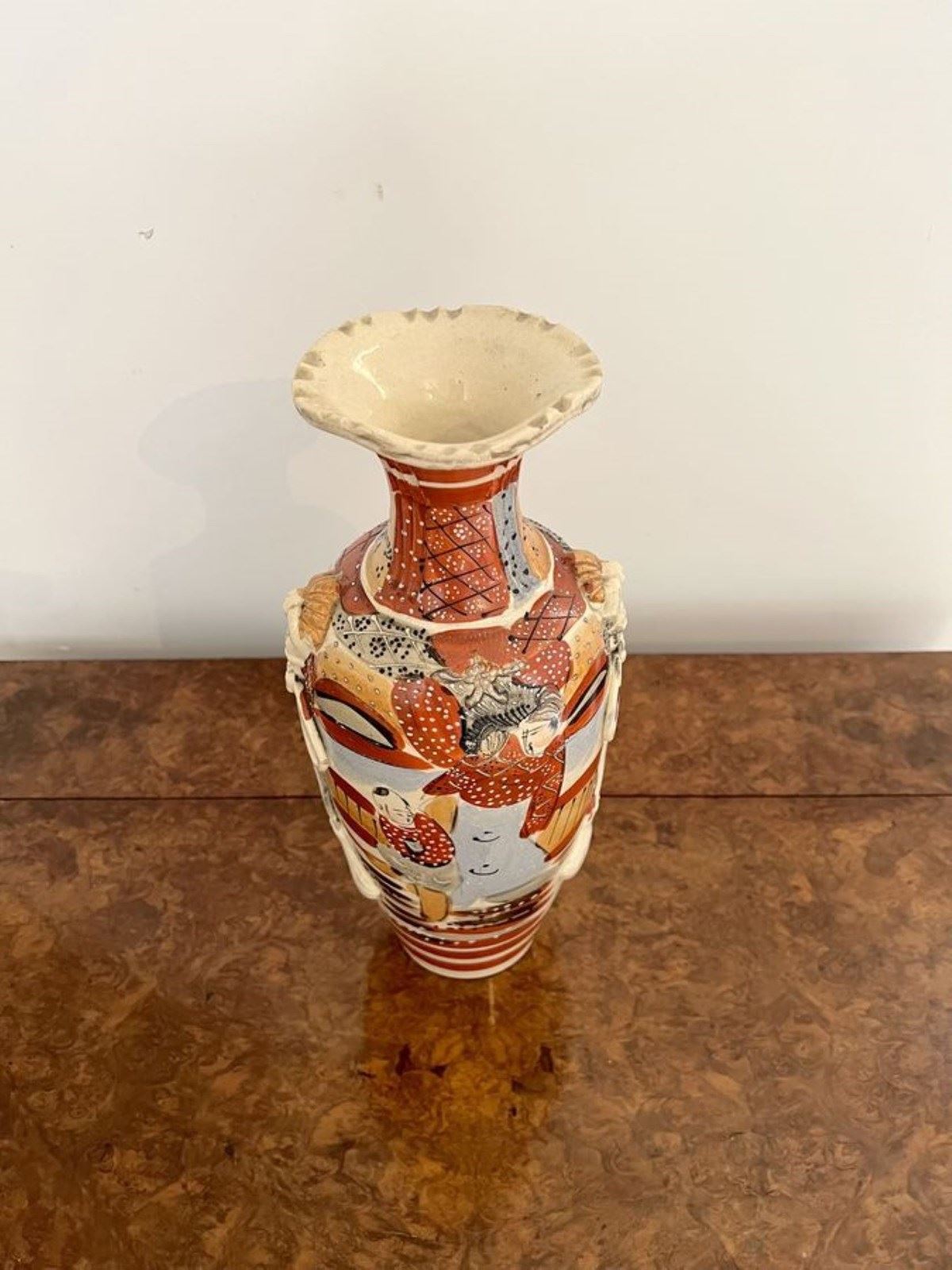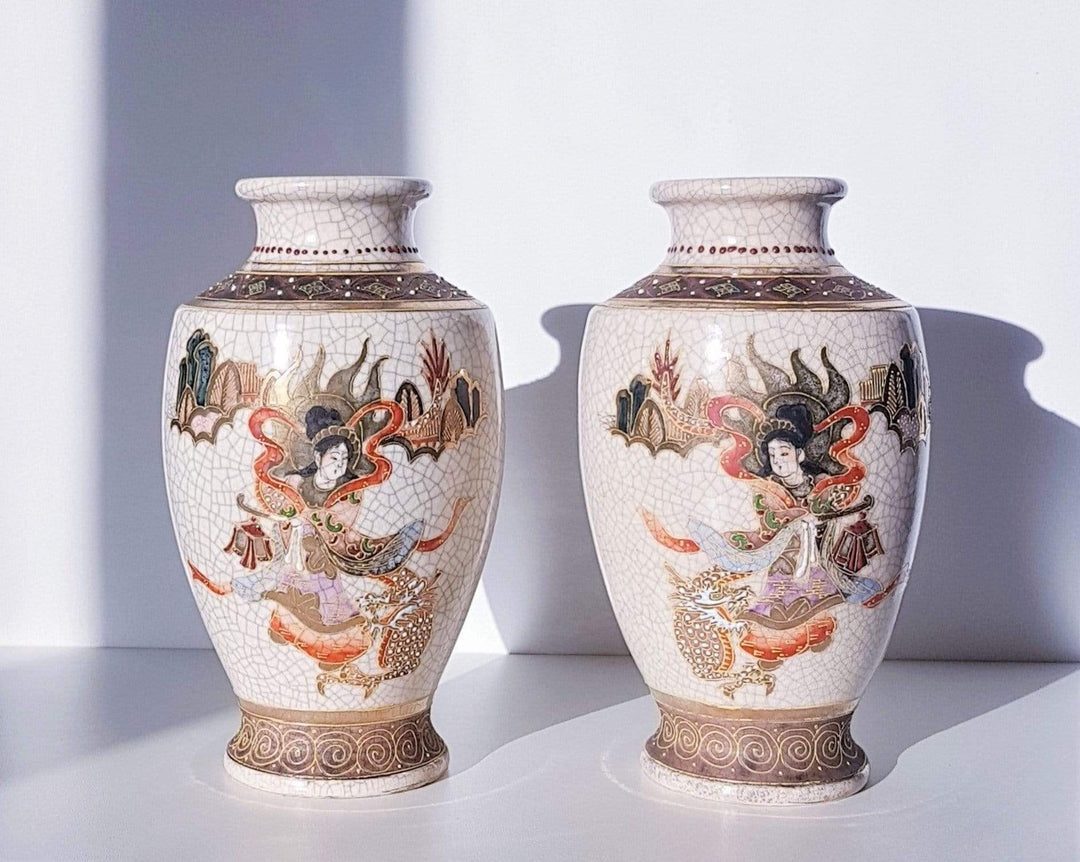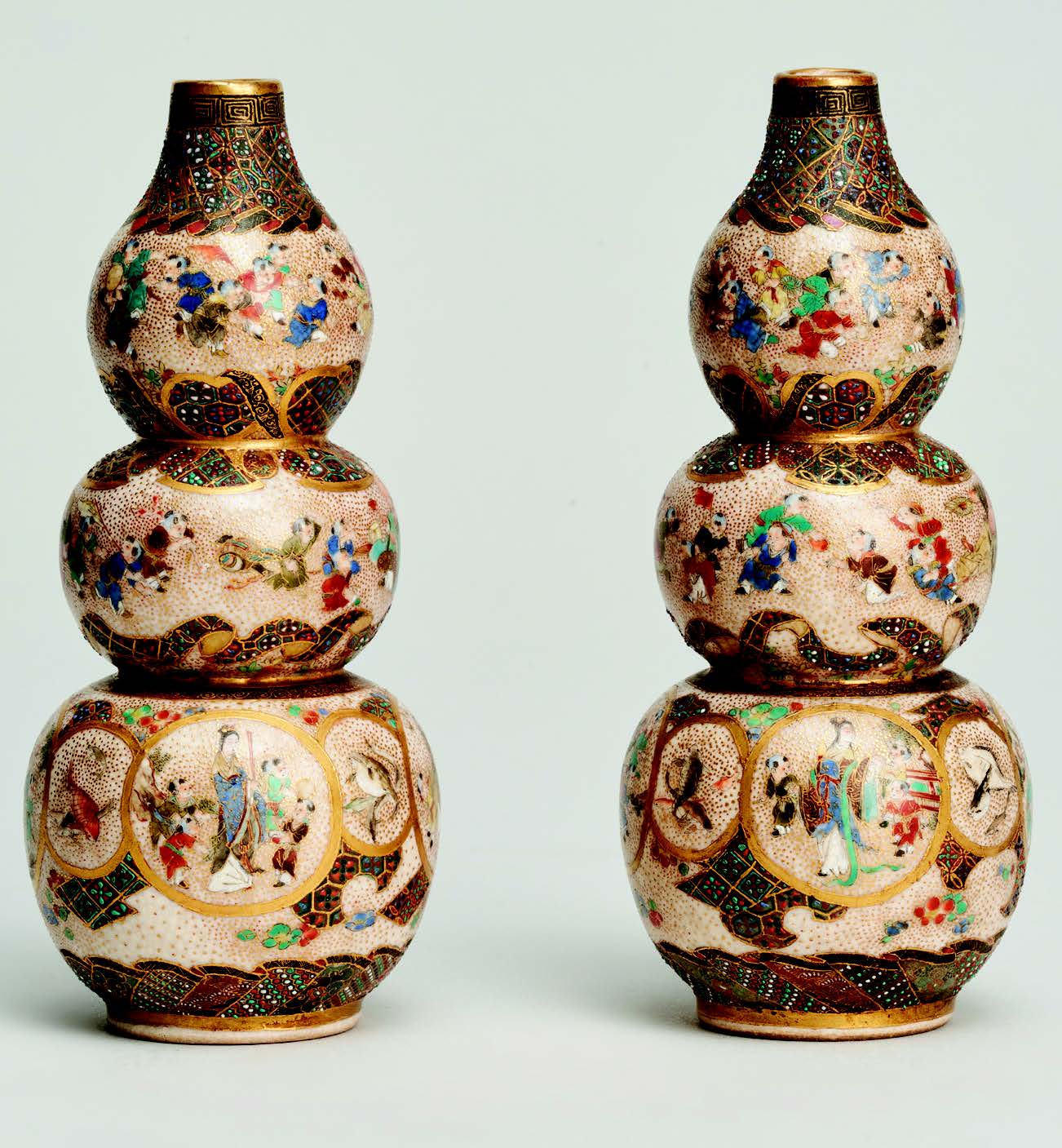Welcome to the fascinating world of antique Satsuma decorative vases. As a passionate collector and admirer of these exquisite pieces, I’ve spent years researching and acquiring vases that not only serve as decoration but also as a rich piece of history. In this extensive guide, I’ll share everything you need to know about Satsuma vases, from their origins to how to identify genuine pieces and tips for caring for your collection.
What are Satsuma Vases?
Satsuma vases are a type of Japanese pottery that originated in the Satsuma domain of Kyushu. They are renowned for their intricate designs, typically showcasing beautiful scenes from daily life, flora, and fauna, all painted in vibrant colors. The uniqueness of each piece makes them highly sought after by collectors and enthusiasts alike.
Historical Background of Satsuma Pottery
The history of Satsuma pottery dates back to the 17th century when it was first developed during Japan’s Edo period. The vases gained significant popularity during the Meiji period (1868-1912) when Japan opened up to foreign influences, allowing for new artistic techniques to flourish.
Key Historical Periods
- Edo Period (1603-1868): Initial development of Satsuma ware.
- Meiji Restoration (1868): Introduction of Western influences in art.
- Taisho Period (1912-1926): Continued evolution of design and style.
Types and Styles of Antique Satsuma Vases
Within the realm of Satsuma pottery, there are several distinct styles and types of vases. Understanding these nuances is crucial for collectors.

Common Types of Satsuma Vases
| Type | Description | Typical Features |
|---|---|---|
| Small Vases | Ideal for displaying on shelves or tables. | Intricate designs, vibrant colors. |
| Tall Vases | Great for floor displays and centerpiece arrangements. | Bold patterns, detailed scenes. |
| Framed Vases | Often displayed in shadow boxes. | Unique shapes, mixed media. |
Distinctive Design Characteristics
Antique Satsuma vases are distinguished by their use of overglaze decoration, often featuring gold embellishments and intricate detailing. Here are some common characteristics:
- Color Palette: Warm earth tones mixed with gold and vibrant reds.
- Imagery: Commonly features motifs of blossoms, landscapes, and figures.
- Texture: Typically smooth but can feature raised designs due to the painting method.

Why Collect Antique Satsuma Vases?
Collecting Satsuma vases can be both a rewarding hobby and a sound investment. Here are some reasons why you might consider adding them to your collection.
Investment Value
Quality antique Satsuma vases often appreciate in value over time, especially rare or artist-signed pieces. As you explore collecting, it’s important to consider which styles and periods are most in demand.

Rich Cultural Heritage
Each vase tells a story, a reflection of Japan’s rich artistic heritage. Owning a piece of Satsuma pottery allows you to connect with centuries of tradition.
How to Identify Genuine Antique Satsuma Vases
As much as collecting is enjoyable, ensuring the authenticity of your purchase is crucial. Here are some tips to help you identify genuine antique Satsuma vases:

Marks and Signatures
Look for specific marks and signatures on the bottom of the vase. Authentic Satsuma items typically include a “Satsuma” mark or may be stamped with the artist’s signature.
Common Marks
- Rising Sun: Indicates a pre-1912 creation.
- Circle with Characters: Denotes the region of Satsuma.

Materials and Craftsmanship
Genuine Satsuma vases are crafted from high-quality clay and feature prominent gold detailing. If the vase appears too glossy or lacks intricate detail, it may be a reproduction.
Care and Maintenance of Satsuma Vases
Proper care is essential to maintain the beauty and integrity of your antique Satsuma vases.

Cleaning Tips
Here are some best practices for cleaning your Satsuma vases:
- Use a soft, dry cloth to remove dust.
- For tougher stains, use a damp cloth with a mild soap solution.
- Avoid abrasive materials that could scratch the surface.
Display Recommendations
When displaying your Satsuma vases, consider the following:
- Keep them out of direct sunlight to prevent fading.
- Use stable surfaces to prevent accidental falls.
- Consider using display cases to protect from dust and damage.
Where to Buy Antique Satsuma Vases
Finding quality antique Satsuma vases can be an adventure in itself. Here are some avenues for sourcing these beautiful collectibles.
Antique Shops
Local antique shops often have a selection of Satsuma vases, and you may be able to negotiate prices or get insight into the piece’s history from the seller.
Online Marketplaces
Websites like eBay and Etsy have numerous listings for Satsuma vases. Always verify the seller’s reputation before making a purchase.
Best Online Marketplaces for Collectors
| Marketplace | Pros | Cons |
|---|---|---|
| eBay | Wide variety, competitive pricing. | Risk of counterfeit items. |
| Etsy | Unique, often handmade items. | Higher prices due to artisan quality. |
| Ruby Lane | Curated antique shops. | Fewer listings compared to larger sites. |
Auctions and Estate Sales
Keep an eye on local and online auctions. They can be an excellent source for unique and rare Satsuma vases.
Personal Experience with Antique Satsuma Vases
As a collector, my journey with Satsuma vases began at a small antique shop on a rainy afternoon. The moment I saw the intricate patterns and vibrant colors, I was captivated. Over the years, I have learned to appreciate not just the beauty of these vases, but the stories they tell. Each piece in my collection holds a memory, whether it’s from a bustling estate sale or a quiet conversation with a knowledgeable dealer.
FAQs about Antique Satsuma Decorative Vases
What makes Satsuma vases unique?
Satsuma vases stand out due to their historical significance, intricate craftsmanship, and vibrant colors. Each piece is often unique, reflecting the artistic style of the period it was created in.
How can I determine the value of my Satsuma vase?
The value of a Satsuma vase can depend on several factors including age, rarity, condition, and demand in the market. Consulting an appraiser specializing in antique Asian arts can provide a clearer valuation.
Are there reproductions of Satsuma vases?
Yes, there are reproductions and later imitations. It is crucial to familiarize yourself with authentic marks and characteristics to identify genuine antique pieces.
Can Satsuma vases be used for flowers?
While they can technically hold flowers, it’s best to avoid using them for this purpose to prevent water damage and deterioration of the decorative elements.
Where can I learn more about Satsuma pottery?
There are many resources available such as books, online articles, and forums dedicated to antique collecting. Museums featuring Asian art often have displays and information on Satsuma pottery as well.
Conclusion
Antique Satsuma decorative vases are more than mere collectibles; they are treasures steeped in history, culture, and artistry. Whether you’re a seasoned collector or a newcomer to the world of antiques, these vases can add a unique touch to your collection and home. With proper care and informed purchases, you can appreciate the beauty and craftsmanship these vases offer for years to come.